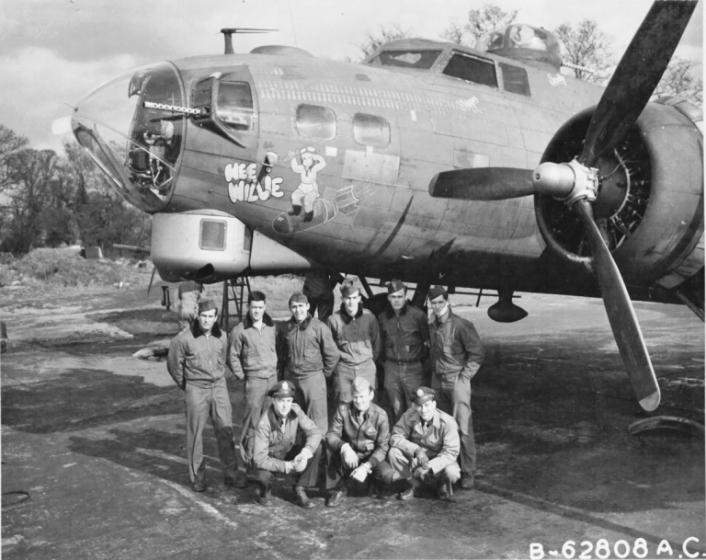The oldest B-17G still in service with the 91st Bomb Group and the next to last B-17 lost to hostile action by the group met a horrifying fate in the skies over Germany on April 8, 1945, just 30 days before Germany surrendered on May 7.
Captured in the black and white photographic images from an automatic strike camera aboard another B-17, the destruction of Wee Willie in the waning days of World War Two after being struck by enemy anti-aircraft fire produced some of the most dramatic and iconic images of World War Two in the skies over Europe. Only one crew member would escape the rapid and fiery breakup of the heavy bomber before the aircraft was completely destroyed upon impact.
B-17G #42-31333
Assigned to the 322nd Bombardment Squadron (Heavy) of the 91st Bombardment Group (Heavy), 1st Air Division, 8th Air Force, B-17G Flying Fortress serial number 42-31333 came off of the Boeing Plant No. 2 production line in Seattle, Washington as the 302nd B-17G. In October of 1943, the bomber was delivered to Cheyenne, Wyoming and the United States Army Air Force (USAAF).
The heavy bomber was then transported to Royal Air Force (RAF) Bassingbourn in Cambridgeshire, United Kingdom (UK), receiving its assignment to the 322nd. The battle-scarred veteran of 128 missions had served for one year, three months, and 20 days. Hit by anti-aircraft fire on Feb. 3, 1944, over Welhelmsahaven, Germany, and out of action until Feb. 20, the aircraft would be repaired and continue on until her final mission on Apr. 8, 1945.
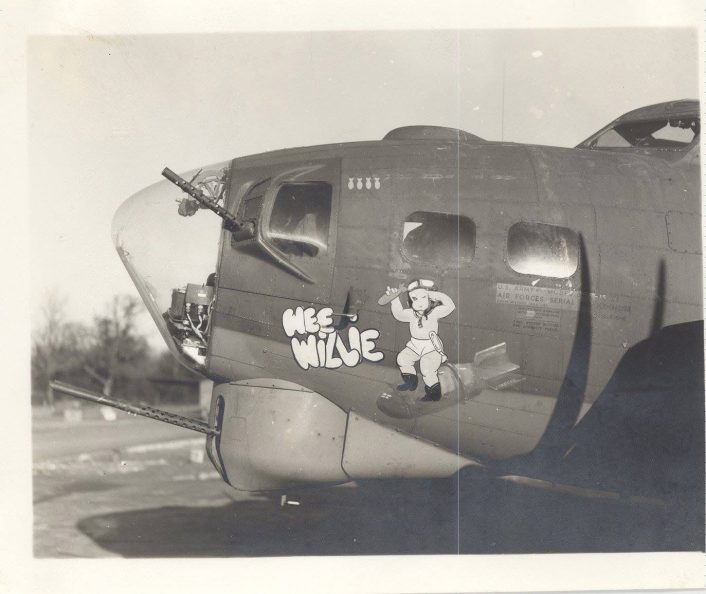
The aircraft was dubbed Wee Willie with corresponding nose art, and the identification letters LG W painted on both sides of the bomber’s olive drab fuselage. Denoting the 1st Bombardment Wing, a white triangle containing a black letter A ((1st Bomb Group) was displayed on both sides of the vertical fin with the greater area of the fin painted red. The A in the white triangle was displayed as well as on the top side of the right wing. With both upper and lower red wing tips along with red covering most of the horizontal stabilizers, the elevators and rudder were left olive drab, along with most of the remaining upper surfaces of the bomber. The red indicated 8th Air Force 1st Air Division, and was used for effective visual identification at long distances. The undersurfaces of the fuselage, wings, and horizontal stabilizers were painted neutral grey.
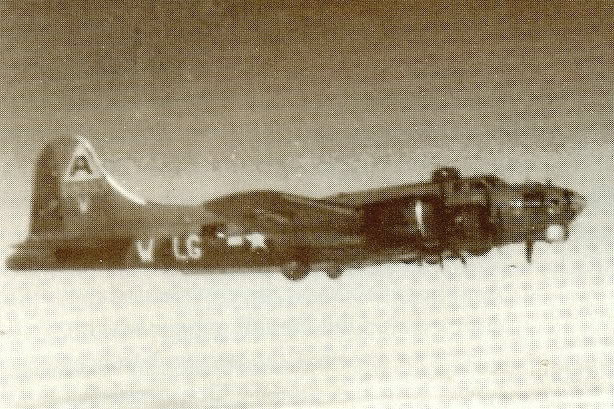
The B-17G was a four-engine heavy bomber powered by Wright Cyclone R-1820 engines producing 1,200 horsepower each. Maximum speed was 300 mph, range 1,850 miles, and the ceiling was 35,000 ft. The aircraft had a wingspan of 103 ft 10 in, with a length of 74 ft 4 in and a height of 19 ft 1 in.
B-17G models differed from the previous B-17F version mainly in the addition of a twin .50 caliber machine gun chin turret, increasing the defensive capabilities against frontal attacks. A total of 13 Browning .50 caliber machine guns were carried by the B-17G, along with a bomb load of up to 6,000 lbs.
The Last Mission
Wee Willie left RAF Bassingbourn on April 8, 1945 with a crew of nine, bound for railroad targets in Stendal, Germany along with 72 other B-17s. Using ground search radar known as H2S, the bombers located their targets through the cloud cover. Moderate anti-aircraft fire was encountered. What happened next is best explained by an eye witness, a gunner on another B-17 from the 401st Squadron, Staff Sgt. George Little:
“We were flying over the target at 20,500 feet altitude when I observed aircraft B-17G, 42-31333 to receive a direct flak hit approximately between the bomb bay and #2 engine. The aircraft immediately started into a vertical dive. The fuselage was on fire and when it had dropped approximately 5,000 feet the left wing fell off. It continued down and when the fuselage was about 3,000 feet from the ground it exploded and then exploded again when it hit the ground. I saw no crew member leave the aircraft or parachutes open. (Missing Air Crew Report [MACR] 13881)
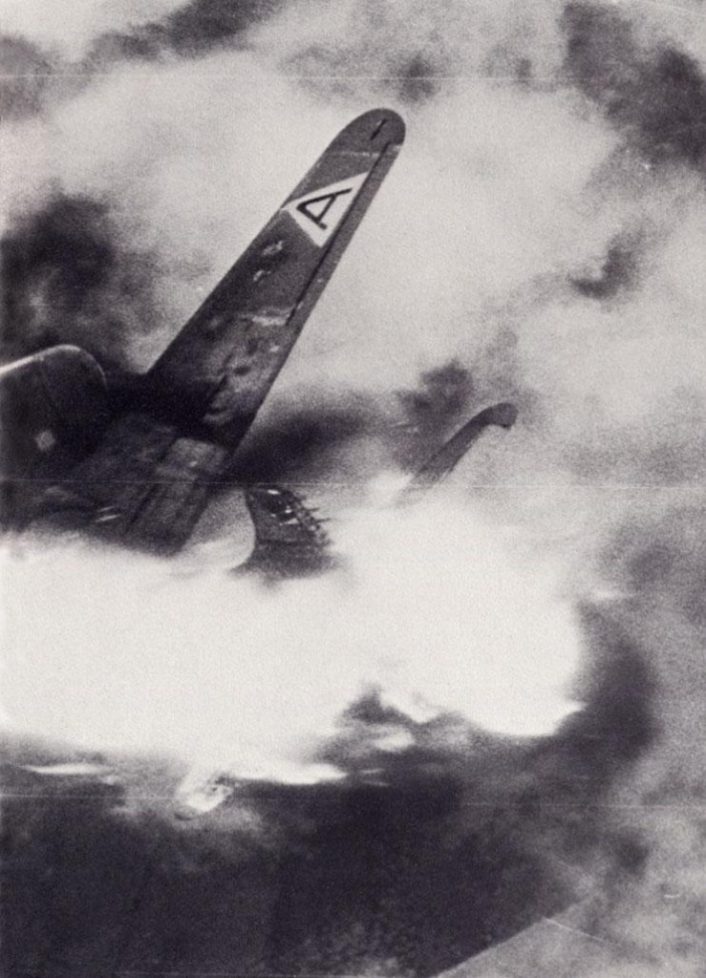
Wee Willie had suffered a direct hit from the dreaded German 88 mm flak gun, causing the left wing along with its two engines to detach from the aircraft. In the resulting death spiral, possibly blown out by the first reported explosion, pilot 1st Lieutenant Robert Fuller did manage to escape the doomed aircraft.
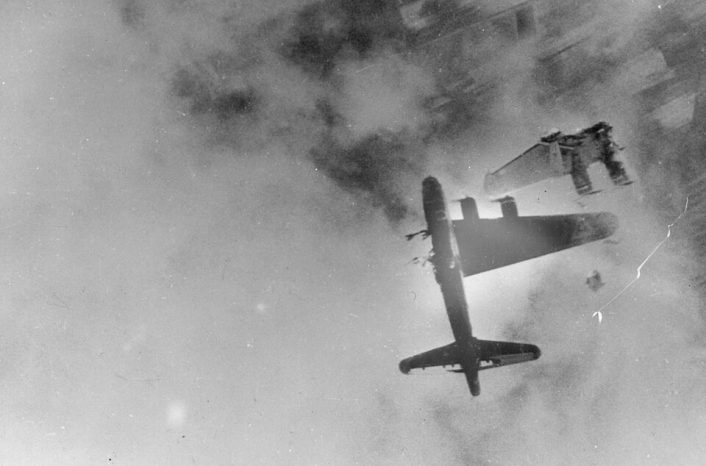
Fuller would become a POW (Prisoner of War). The remaining eight crew members were KIA (Killed in Action), including: Co-pilot 2nd Lieutenant Woodrow Lien, navigator Technical Sgt. Francis McCarthy, bombardier Staff Sgt. Richard Proudfit, top turret Gunner Staff Sgt. Wylie McNatt Jr., ball turret Gunner Staff Sgt. William Cassidy, radio/radar operator Staff Sgt. Ralph Leffelman, waist gunner Staff Sgt. James Houtchens, and tail gunner Sgt. Lemoyne Miller.
Wee Willie was the oldest B-17G in service with the 91st Bombardment Group, and the next-to-last B-17 of the group lost due to enemy action before Germany capitulated on May 7, 1945, ending the war in Europe. A total of 12,731 B-17s were produced between 1936 and 1945, with 4,735 being lost in combat.
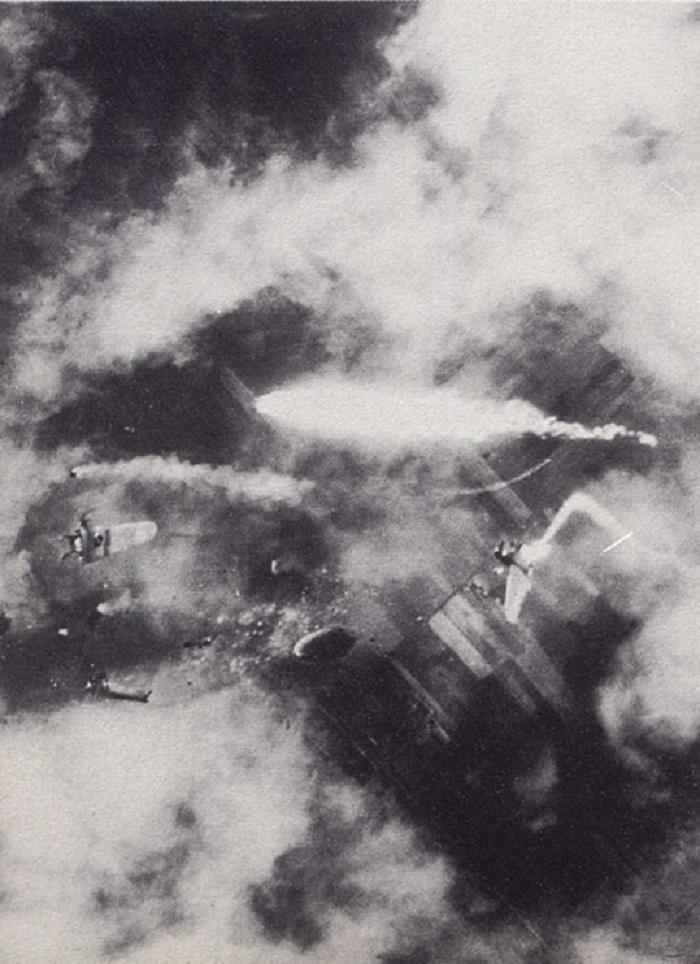
The Eighty-Eight
The German Flak 18/36/37 (German eighty-eight) was a versatile gun that fired an 8.8 cm projectile at a muzzle velocity of 2,690 feet per second (FPS), and a high rate of fire of 15-20 rounds per minute (RPM). It was responsible for creating the familiar black puffs in the air after the 17 lb projectiles exploded at altitude and projected fragments of jagged metal in all directions, ripping into and piercing the thin aluminum skins of aircraft.
Aircraft within a 200 yard radius of the explosions were at risk of being damaged or destroyed. Thousands of Allied aircraft were victims of this weapon. Crewed by ten men, the gun could reach altitudes of 26,000 to 32,500 ft. The deadly eighty-eight was also an effective anti-tank weapon, effective against ground targets, and also installed on some German armor. Over 21,000 were produced during the war.
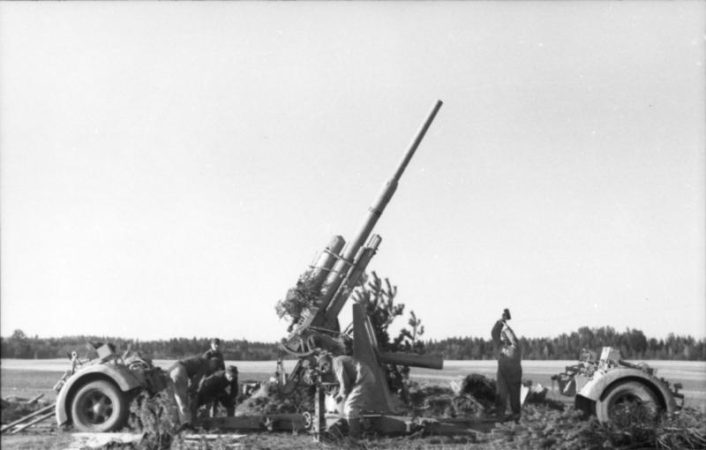
The Other Loss that Day
While Wee Willie is remembered through a set of horrifying photos, four other B-17s were heavily damaged during the raid, with 13 others receiving minor damages. The targets were hit and the raid was considered a success, but a second B-17 was also lost that day during the raid.
B-17G serial number 42-102504 Times A-Wastin’ was also hit by German flak. This aircraft belonged to the 401st Bombardment Group (Heavy) and was piloted by 1st Lieutenant Peter Pastras. Technical Sgt. William Carson witnessed the event from another B-17:
“I first observed aircraft B-17-G, 42-102504, to be in trouble at about 30 seconds to 1 minute after bombs away. I saw the No. 2 engine smoking badly and there appeared to be flames between the No. 2 engine and the fuselage. The right wing and engines appeared to be untouched. The aircraft then nosed upward, stood on the right wing tip, and side slipped downward in a steep dive. After it had fallen for a couple of hundred feet I saw one (1) man leave the aircraft and his parachute opened immediately. The aircraft continued downward in a steep circling dive to the right. I instructed the Ball Turret-Gunner of our ship to watch it go down and he stated that only the one (1) parachute came from subject aircraft before it crashed and burned. (MACR 14295)
All but two of the crew of Times A-Wastin’ would be listed as KIA, with the two survivors being taken as POW’s. Her crew included pilot 1st Lieutenant Peter Pastras, co-pilot 2nd Lieutenant Robert Morris, navigator 2nd Lieutenant George Latches, bombardier Staff Sgt. Don Lemons, ball turret gunner Sgt. Edgar Harrell, waist gunner Staff Sgt. George Wong, tail gunner Robert O. Smith, top turret gunner Lyle Jones, and radio operator Bob A. Smith. Only Lyle Jones and Robert A. Smith would survive.
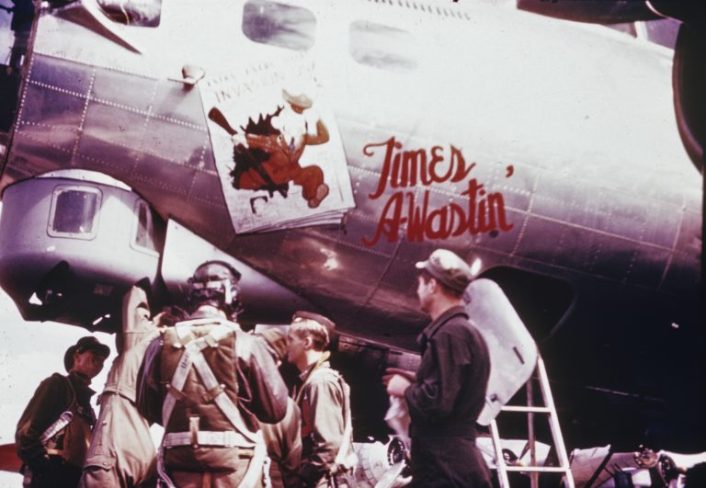
Etched in History
The tragic story of Wee Willie is forever told in dramatic and horrifying photos, giving us a glimpse of the dangers faced everyday by the young aircrews risking it all in the skies of World War Two. The two stories told here is just a sampling of the examples of the bravery and tragedy that unfolded when the world was on fire, as thousands of aircraft and crews experienced similar fates throughout the conflict. And although these two aircraft were lost towards the end of a war that obviously appeared won, it also illustrates that war is a dangerous and deadly business right up to the end.
